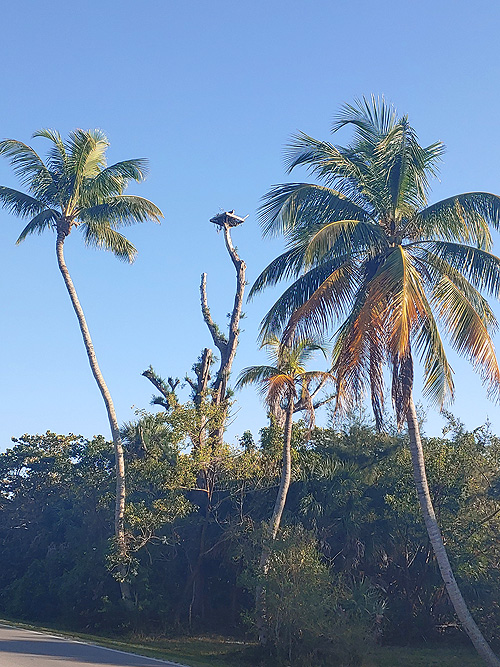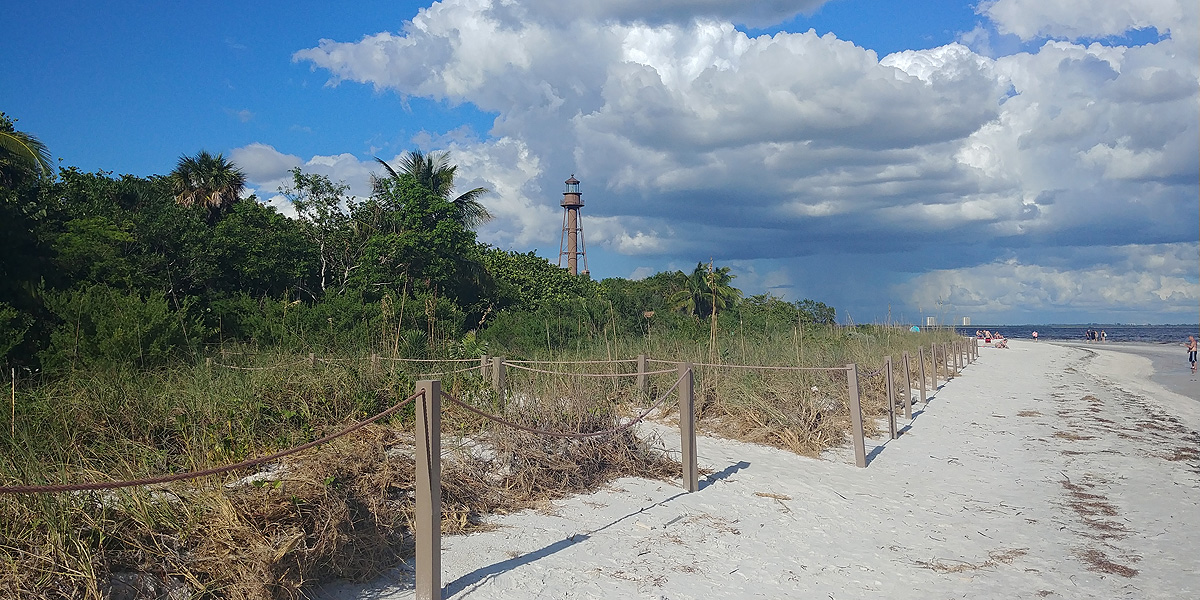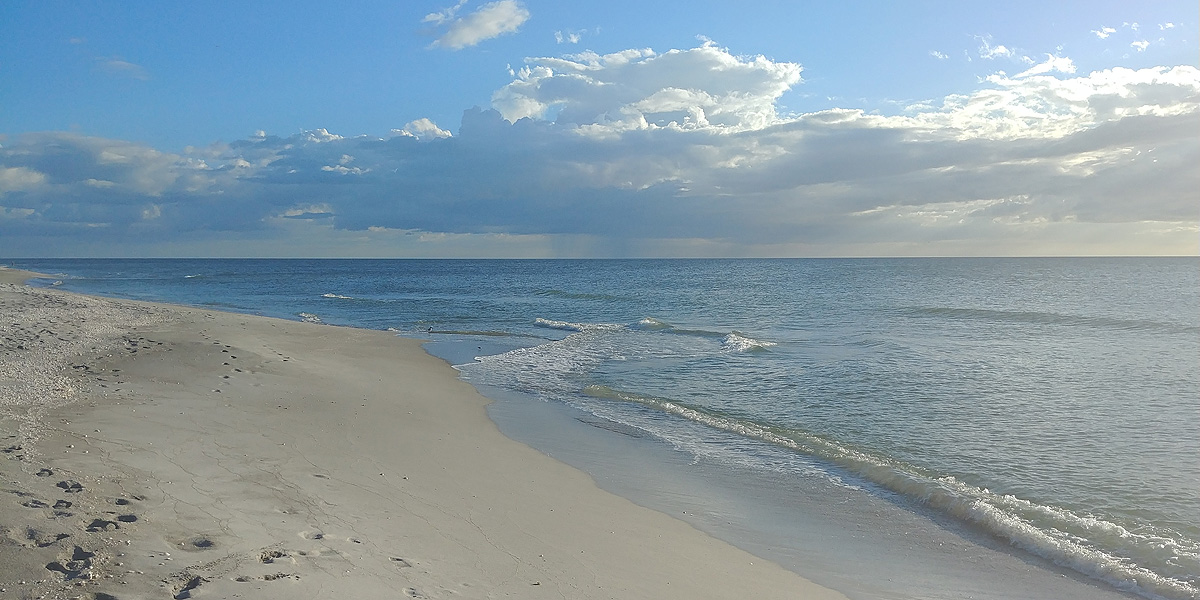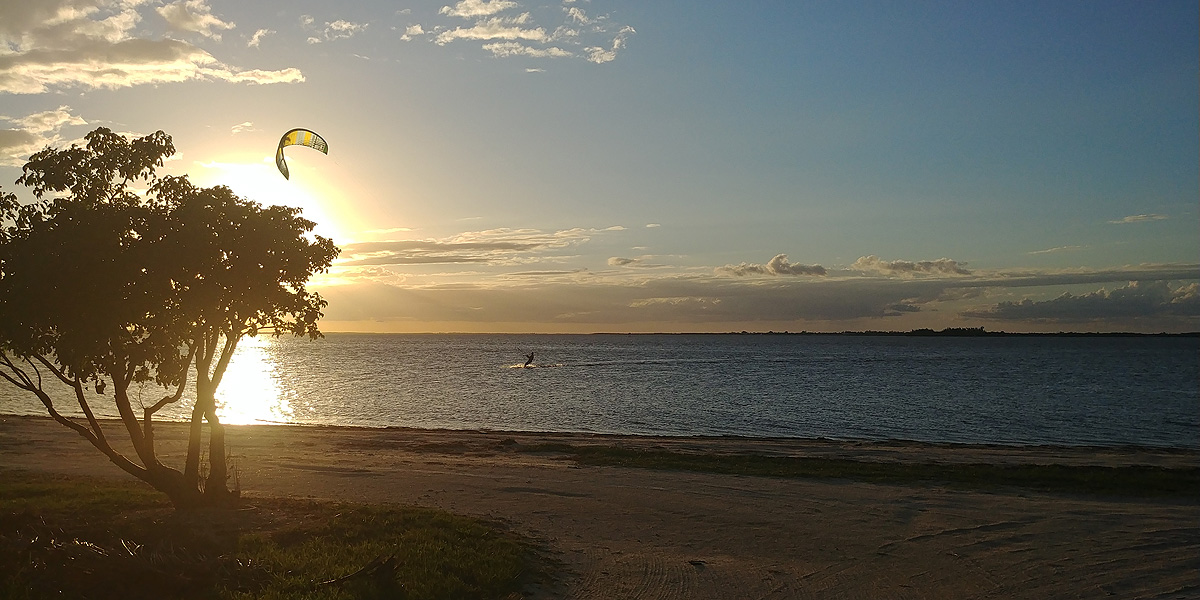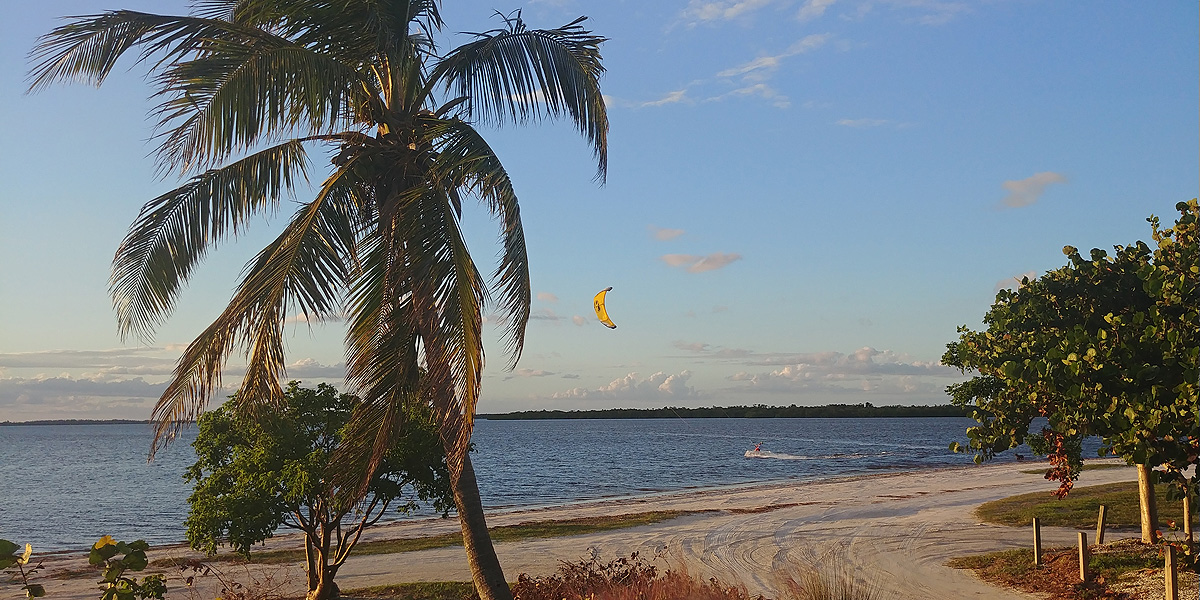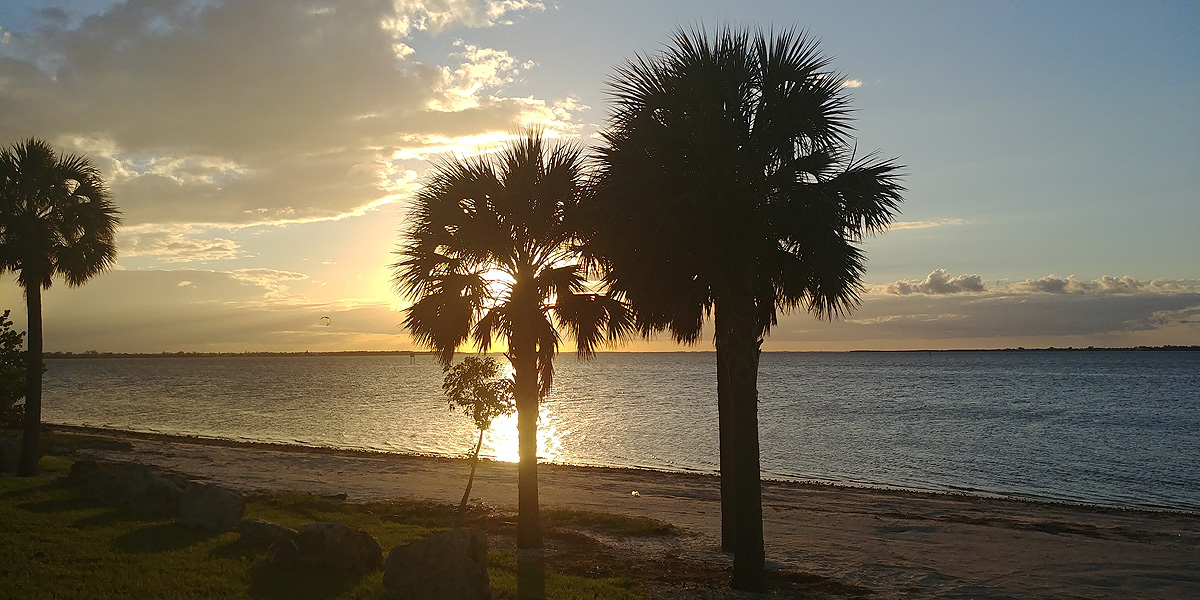The "Stars" of the barrier islands in the Gulf of Mexico
Warm winds, rushing waves, miles of white sandy beaches with millions of colorful shells or fantastically tropical mangrove forests - a treat for body and soul.
Who does not know them? The world most famous Barrier Islands on the Gulf of Mexico in Southwest Florida - Captiva and Sanibel.
No wonder that these two tropical islands are extremely popular with visitors from Germany, Austria and Switzerland - as the European roots go back to 1888, when the first official resident - an in Austria born sailor - William Herbert Binder - settled on Captiva. "Binder Drive" one of the many small unpaved roads still reminds of him today.
At that time, Captiva, Upper Captiva and Sanibel were still a cohesive island. The Hurricane of 1921 separated today's Upper / North Captiva from the rest of the island and in 1929 another hurricane divided the islands of Captiva and Sanibel. Since 2009 they were again connected by a bridge over the "blind pass".
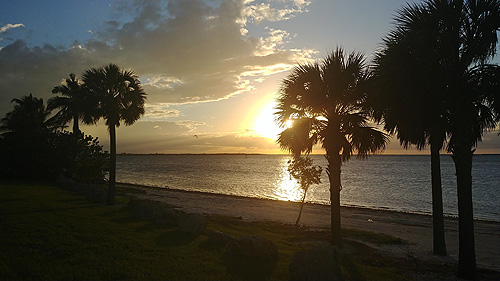
About 5,000 years ago, the water level in the Gulf of Mexico was approximately 2.5 meters lower than it is today and Sanibel is said to have formed as an island - inhabited by the Calusa Indians in the following millennia until the end of the 18th century. Not much different than a few of today's islanders, they turned the shells into ornaments of all sorts, living off fishing and in harmony with nature. The Calusa Indians lived among themselves, combatting all invaders with carved weapons from fish bones or tropical plants.
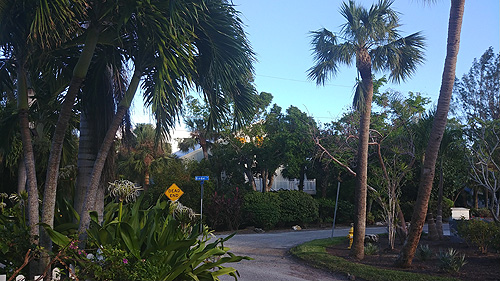
Today's residents of Sanibel and Captiva have learned from the past, cultivate tradition and try to keep their island in harmony with nature as much as possible. Although unlike the natives they do not fight "invaders", but they have always been skeptical of their biggest enemy and biggest friend - tourism. Fighting against its powerful stakeholders was and still is not easy, and it took courageous men and women to oppose tourism in its negative outgrowths. Sam Bailey was one of them who organized the resistance some 60 years ago and founded an island administration. Although they had to give in to the construction of a bridge in 1963 due to a federal court decision, ultimately Sanibel got city rights in 1974 and could decide on himself. And many new regulations were issued and maintained until today: no traffic lights, no street lights, no buildings higher than the highest palm of the island, no fast food restaurants and no big billboards.
Most visitors reach the islands by car. Shortly before the bridge - settled on a narrow white beach - you can watch dozens of kite surfers on a windy day, turning the blue sky into a colorful and exciting spectacle. Immediately you get a taste of water, wind and waves and active island vacation.
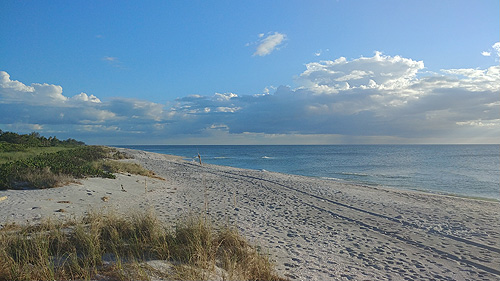
As you cross the bridges, you will be accompanied by other sailors: the ubiquitous pelicans, who sail skillfully just over railings of the bridge.
As a tourist, you must get used to driving patiently on the only narrow main street along the entire island and being overtaken by the many cyclists, with or without trailers, on the wide and secure bike trails.
But when you reach your destination, you are intoxicated by the beauty of nature.
Whether you write down your memories as Anne Morrow Lindbergh did in 1905 in one of the simple cottages overlooking the sea at the Tween Waters Inn Island Resort or playing a round of golf in the northern resort of Captiva, the South Seas Island Resort, meet with friends on one of the cozy bars of the Ybel Resort, waiting for the sunset outside the old-established restaurant Mucky Duck on an wooden bench in the sand or finishing off the day in the excellent top restaurant Mad Hatter - the time on Sanibel or Captiva will be buried deep in memory, like the tracks of the big Loggerhead turtles in the sand on the beach when they crawl back into the sea at nighttime from laying eggs.
Almost endless - it's about more than 15 miles - stretches the white sand with millions of shells from the lighthouse on Sanibel to the northern tip of Captiva.
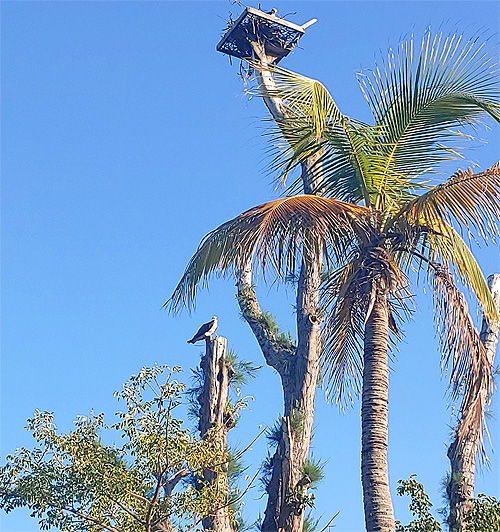
Webcams auf Sanibel

On Captiva you can enjoy the most beautiful sunsets on the Gulf of Mexico, with direct western exposure on miles of white sandy beaches. An island for nature lovers, dreamers, life artists and artists of all kinds, lovers and hermits, dropouts or just people who want to switch off.
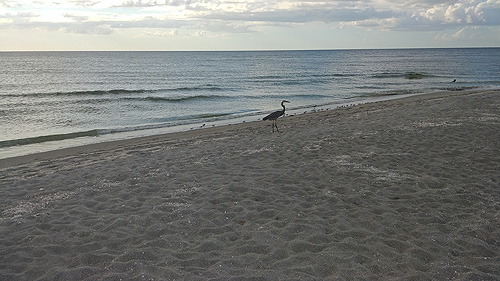
And if you love the sunrises on Captiva - it's just a few steps to get to the other side of the island. Here you can experience gorgeous sunrises over the bay overgrown with beautiful mangrove forests. In order to enjoy both, the famous New York artist Robert Rauschenberg acquired from "Ding" Darling the cozy simple home built on wooden pillars at the end of a long catwalk far into the sea.
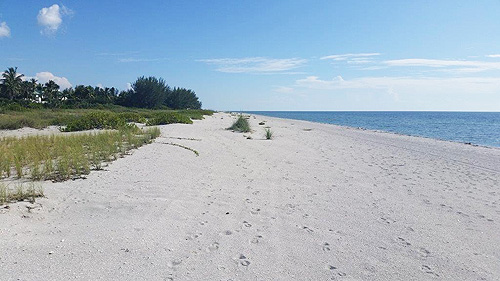
For Robert Rauschenberg Captiva it was an idyllic alternative to his New York studio and had "a magic that was unexplainable in its power." He lived on Captiva from 1970 to 2008 and tried to preserve the island's originality by purchasing many of his neighbors' homes and properties.
The properties are now owned by the Robert Rauschenberg Foundation, which offers scholarships to artists from all over the world. The house on the dock (the "Fish House) is not accessible to the public. Every day curious boaters are cruising around the "Fish house", but access is not permitted.
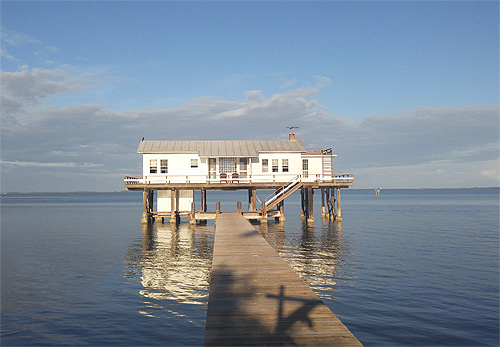
An idyll - which would not get a building permit today - but at that time, when Captiva was not yet such a big tourist attraction, it was the realization of an absolute dream to enjoy life in paradise.
Still today it is very desirable to own a home on Sanibel or Captiva.
You can tell it on a drive along the narrow streets directly on the coast. Many of the remaining building lots are showing off with modern new buildings. Today's building regulations call for concrete that has been tainted for decades. But the new buildings are placed very discreetly in the gaps and are withheld from the curious street view. Or old beach houses are demolished and replaced by modern two-story villas - not taller than the tallest palm trees, but it's often to the disadvantage of the vegetation and tropical scenery. It is pleasing to see that the centuries-old trees are spared by the official requirements and that the fauna and flora are preserved as much as possible.
It is especially beautiful and interesting to reach both islands by boat. One of the most popular anchor points is the Tween Waters Inn Island Resort, where you can refresh yourself at the poolside with cool drinks.
The islanders are very reserved, nobody talks about who lives or builds where, but the multitude of celebrities is no secret. Often they are not recognized when they mingle with the annual 160,000 people vacationing the islands.
Hopefully later generations can enjoy the islands in their natural beauty, and explore by bike or walking the contemplative spots of these unique and quaint islands and perhaps - dreaming in thoughts of the first settler of Captiva - stroll along on the narrow gravel road of "Binder Drive".
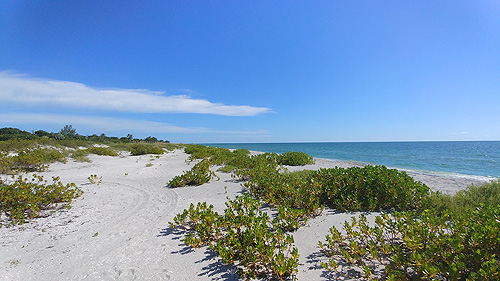
Ospreys found a new home on Sanibel Captiva Road.
Ospreys are prime sentinels of water quality. There home has to be close to a safe environment with clean and healthy waters and the availability of adequate nourishment from healthy fish.
